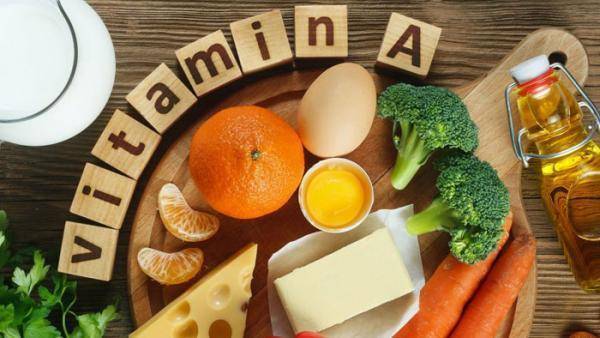It has now been more than two years since the ban came into force on the addition of ethoxyquin as an antioxidant in some vitamin preparations. The European Union decided that it considered the safety of this antioxidant for humans and animals no longer proven and suspended its application. There is no doubt that, from a technical viewpoint, ethoxyquin provides efficient protection of fat-soluble vitamins including vitamin A. Two years after the ethoxyquin (EMQ) ban, we take stock of the following questions: how has the situation regarding the stability of the various vitamin A preparations on the market developed during this period? Have all vitamin producers managed to withstand the imposed modification equally well?
[Article written by animal nutritionist ir. Luc Levrouw]
We did not randomly select vitamin A for investigation in this case. We chose it because it is one of the most degradation-prone vitamins and therefore very difficult to offer in a stable form for application in animal feed. This is because vitamin A is by nature an oil, which degrades very fast through oxidation when exposed to light, air and oxygen. That is also the reason why vitamin A oil without any protection is completely unusable for application in animal feed. Thus, Vitamin A must be protected against these external factors to minimise the degradation, to prevent the vitamin degrading even before it enters the animal's body.
A state-of-the-art product form is required
You can protect vitamin A against degradation by coating the product. This sounds simple, but that is by no means the case with the Vitamin A manufacturing process. After all, a “normal” coating (fat) is insufficient – the vitamin must literally be encapsulated in and bound to a protective matrix. This is an extremely complex process in which the producer must look for a balance between stability and bioavailability. The fact is that if the vitamin is bound too strongly to the protective matrix, this can be problematic for the bioavailability of the vitamin in the animal. And the animal's metabolism will not release the vitamin A from the protective matrix. Furthermore, the standard practice is to add an antioxidant to the vitamin before it is encapsulated. This provides additional protection against oxidation. In the past, Ethoxyquin did the job excellently. It ensured optimal stability, even in vitamin A preparations with inferior coating technology.
EMQ ban
But then the long-awaited ethoxyquin ban came into force for animal feed and vitamin preparations. This meant that producers had to look for an alternative. There was not much choice and, after consideration, most players in the sector decided to use BHT, the second-best alternative for EMQ. But BHT and ethoxyquin differ significantly in several ways. For example, BHT is a solid product and ethoxyquin is a liquid. It quickly became apparent that the imposed switchover had made formulating and coating technology know-how, in particular, much more important than it was previously. Ethoxyquin had the capacity to mask the disadvantages of a lower quality encapsulation somewhat, but that didn't seem to be the case with BHT. Very soon, several vitamin producers were facing a problem. Chinese vitamin A producers faced an additional challenge associated with this switchover. If they added more than 2.5% BHT to the vitamin A preparation, the product became subject to obligatory labelling as a hazardous substance. And that means extra storage and transport costs. So, one major Chinese producer initially restricted the amount of added BHT to 2.5%. It soon became apparent that the combination of inferior encapsulation with a reduced quantity of antioxidant caused major stability problems.
Yet, this inferior material still came onto on the market, albeit at greatly reduced prices. Under pressure from European distributors, the Chinese producer in question was reprimanded and obliged to raise the level of BHT to 10%. That seemed to be a step in the right direction, but it eventually became apparent that the material still did not match the previous quality.
Rovimix A1000
In the search for an adapted EMQ-free product form DSM also opted to replace the additive with BHT. A minimum dosage of 10% appears to be appropriate for optimal protection. No other additives were applied here. Moreover, with decades of experience as a European producer of vitamins, DSM has the necessary know-how regarding different applicable formulation techniques for vitamin protection. Various studies - conducted by both DSM and its customers - demonstrate that the new, EMQ-free form of Rovimix A1000 is as stable as the earlier version. This is mainly attributed to the high standards used in formulating the coating and protective matrix. And additional studies show that the bioavailability of the vitamin remains assured.
Comparative tests
During the period since the ban, several vitamin A producers have faced a real nightmare regarding the EMQ ban. This changeover initially even led to problems with spontaneous combustion of the material. During a race against time, new modifications were carried out, but there was insufficient time to perform the required tests. Nevertheless, this "off spec" material also ended up on the market - along with a shocking and never previously seen advice to significantly overdose the preparation - and of course it was sold at significantly reduced prices ... Overdosing with less stable vitamin A preparations is, legally speaking, not a good idea. After all, there is a legal maximum for vitamin A content in very many types of feed, and this practice can easily lead to that being exceeded. In addition, the level of degradation mainly depends on the circumstances that the premix and feed have experienced. And these are not always determinable in advance.
It is now clear that there are currently extremely wide-ranging differences in quality - and particularly in stability - between the various vitamin A preparations currently being offered on the world market. On paper they all contain the same amount of vitamin A, which is fine until the bag is opened. Meanwhile, DSM has not only extensively researched the stability of Rovimix A1000, but also that of products from the main global players in the vitamin A market.
Five preparations - from European and Chinese manufacture - were extensively tested on stability, both in premixes and in (pelleted) final feed form, each time after a storage period of three months. Although the vitamin A stability of our EMQ-free Rovimix A1000 is fully comparable to that of the earlier (EMQ) form, this does not mean that there is no possibility of vitamin A breakdown after processing in an (aggressive) premix process + processing into pelleted feed. But the level of breakdown with the new form is no greater than it was when use of EMQ as an antioxidant was still permitted. Furthermore, these tests show that the level of degradation is significantly less with Rovimix A1000 than with the other tested preparations. On average, the losses in these other products (after three months of storage of premix and final feed) was a good 30% higher than the those found when using Rovimix A1000. The tests make it painfully clear that some vitamin A producers have still not got the stability problem under control... Although quite tough, the conditions used in setting up these comparative tests are certainly not unrealistic. You can compare them with circumstances such as those that occur in countries with a warm climate: 25-30° C during the day, > 50% relative humidity, and storage of premix and final feed through a period of three months. Less extreme conditions could possibly lead to less degradation, but the conclusion would remain true, i.e. not all vitamin A preparations on the market today are 1: 1 comparable, even though they specify the same vitamin A content on paper ...
For more information about our experiences with this most important vitamin, consult your contact person at DSM Twilmij.


